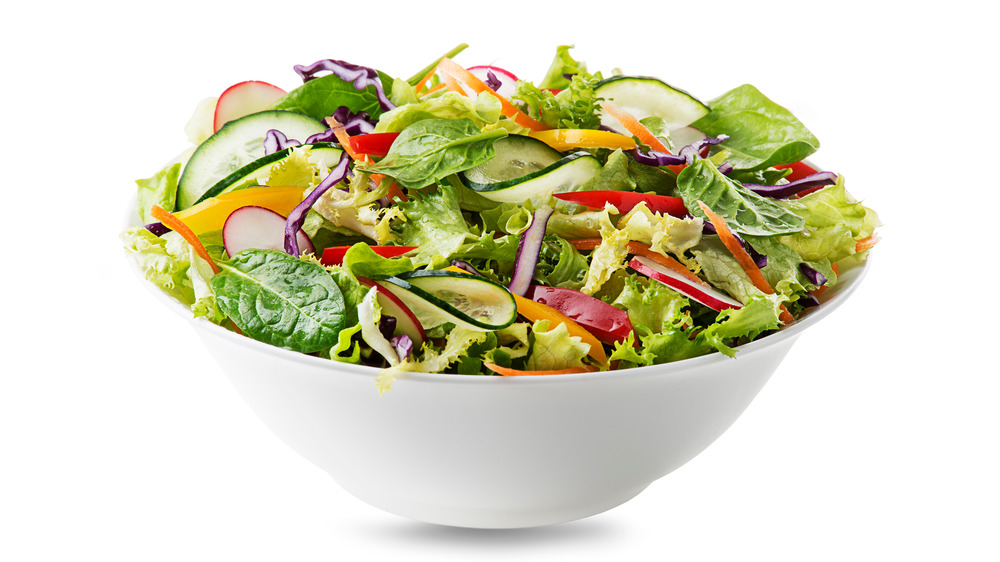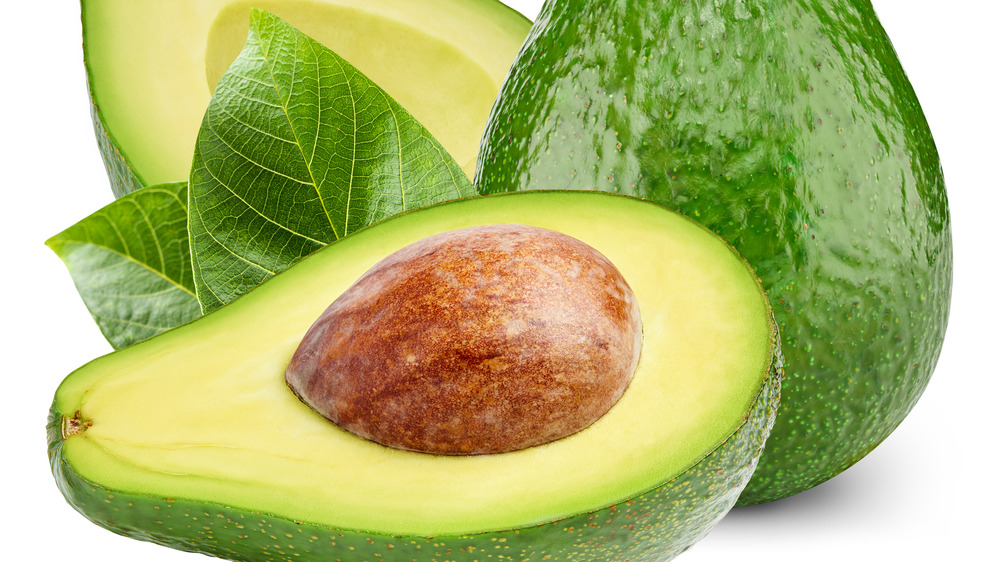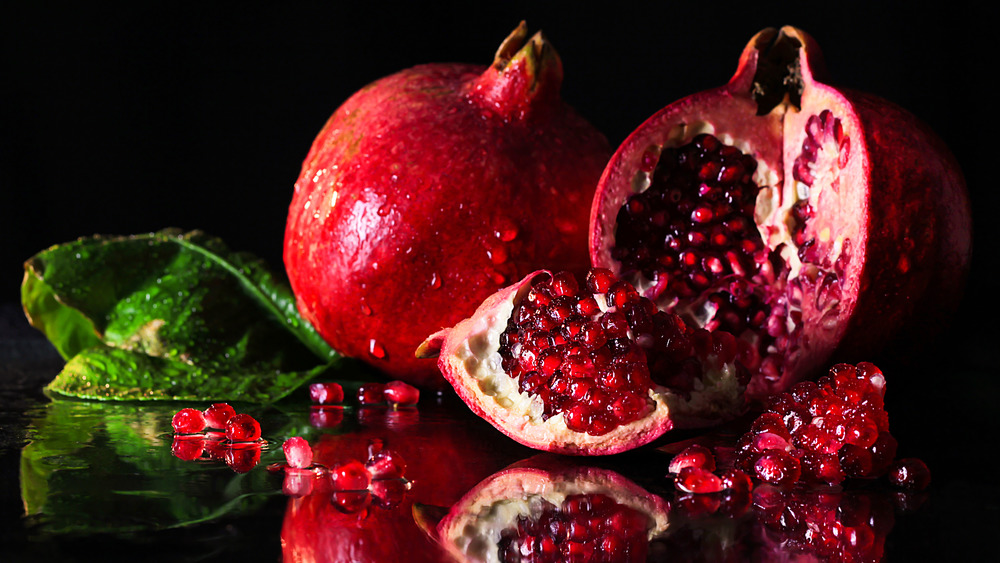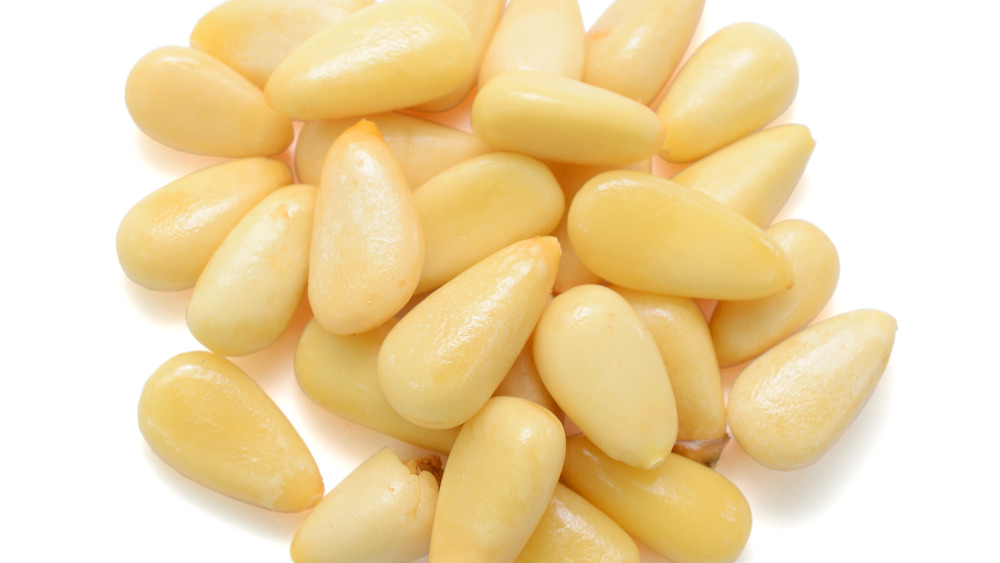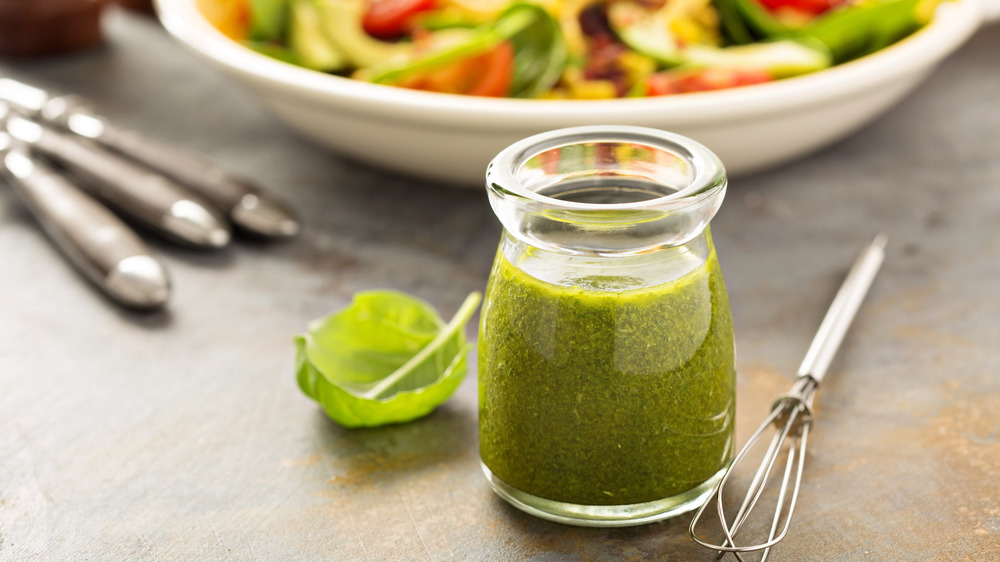The Surprising Ingredients That Will Change Your Salad Forever
Salads are one of those foods that give off mixed signals. Our first thought is "raw vegetables: got to be healthy, right?" But then there's all that info out there saying no, salads are bad; salads are fattening, and all that stuff you pile on those raw veggies to give them a little bit of flavor is actually going to be worse for you than just chowing down on a burger and fries.
What to do, what to do? Sure, if we all had the self-discipline to eat nothing but plain old lettuce with maybe a few shreds of carrot for color, we'd be okay...or would we? While something like iceberg lettuce won't add much to your daily calorie or carb count, neither does it have that much to offer in the way of nutrients. It's a great space filler, but that's about all. So salads have to be either bad for you or boring – is that is? No, not at all, says nutritionist Serena Poon, founder of wellness website Serena Loves as well as the superfood supplement line Just Add Water. In an exclusive interview with Mashed, she supplied us with a list of ingredients you can add that can turn plain lettuce into a delicious, nutritious meal.
Try adding some tastier veggies
Poon suggests two vegetables that can really turn your salad into something special. Mushrooms "deliver one of the most powerful flavors of any plant food," she says, describing it as "umami...that is rich, earthy and grounding." While raw mushrooms are good, cooked ones are even better – Poon suggests enhancing the flavor by mixing several varieties and sautéeing them in oil with garlic and herbs. They are the perfect topping for any type of warm salad such as one Poon likes to make with ancient grains, roasted sweet potatoes, sautéed tofu, and red onions with a miso-ginger dressing.
Another vegetable Poon says makes a great addition to any salad is avocados. Not only do these add what she describes as "a rich flavor" and "creamy, satisfying profile," but she also says they are packed with fiber, vitamins, and minerals. One type of salad she enjoys is something she calls a vegan version of the classic Cobb. Her salad calls for endives, tomatoes, and chickpeas as well as avocados, and is topped with creamy cashew dressing.
Fruit adds flavor
Fruits play surprisingly well with vegetables, especially in salads. Poon calls apples "a wonderful addition to any salad" and says their "satisfying and refreshing crunch...[is] very exciting for your taste buds." Well, we all need a little more excitement in our salads, don't we? In addition to the thrill factor, apples are also a great source of antioxidants including one called quercetin, something Poon calls a "powerful flavonoid...which protects your body from damaging free radicals, inflammation and possibly illness." Her apple salad recommendation includes fresh spinach, sliced onions, walnuts, and chopped apples (sweet or tart, your choice) with an olive oil/balsamic vinaigrette.
Another fruit that comes highly recommended by Poon is the pomegranate. She says, "These little seeds offer a burst of flavor and a delightful texture that 'pops' in your mouth," but she also tells us that this fruit is just full of healthy antioxidants as well. She favors sprinkling pomegranate seeds on a mixed green salad with walnuts and a homemade vinaigrette.
These grains and nuts are great additions
Poon really likes ancient grains and says adding them to your salads can boost their flavor as well as their nutritional profile. In particular, she's a fan of farro, telling us it "offers a hearty, nutty flavor to salads and grain bowls" in addition to "deliver[ing] a good amount of fiber, iron, and even protein." She finds farro to be a great base for fall or winter salads, suggesting you add a teaspoon of avocado oil and a sprinkle of pepper and pink Himalayan salt to a bowl of cooked farro, then add roasted squash, tempeh, and sautéed greens. For a dressing, her preference is honey mustard.
If you'd prefer your nutty flavor to come from an actual nut, why not try pine nuts? (If you can afford them, that is.) Poon calls these the "little nuts with a big flavor profile" and says they're "particularly scrumptious when toasted." Toasted pine nuts can be used to top off almost any kind of salad (except, perhaps, a scary retro Jell-O one), but Poon says one of her favorite things to eat is a salad made with butternut squash, kale, quinoa, chickpeas, pomegranate seeds, and pine nuts.
Herbs will take your dressing to a whole new level
No matter what's in your salad, the best way to boost the flavor is with a great dressing. Not just some creamy stuff out of a bottle...sorry, Hidden Valley addicts, but you know that stuff's not good for you. No, Poon says it's important to make your own dressing, and you should be sure to include fresh herbs. She feels that herbs (fresh, not dried) "are an important staple of any salad eater's diet" as they "add rich and exciting flavors...[and] also supply healing benefits."
Rather than ranch, Poon suggests this vegan version of a green goddess dressing made by mixing tahini, apple cider vinegar, garlic, and a selection of fresh herbs in your blender. You can use any combination of herbs you enjoy, but to get you started, Poon says cilantro, dill, oregano, sage, and thyme are all good ones. Not only might such herbs have anti-inflammatory, antiviral, and/or antioxidant properties, but they will also give your salad dressing a gorgeous green color that's way better than that boring old white stuff.
